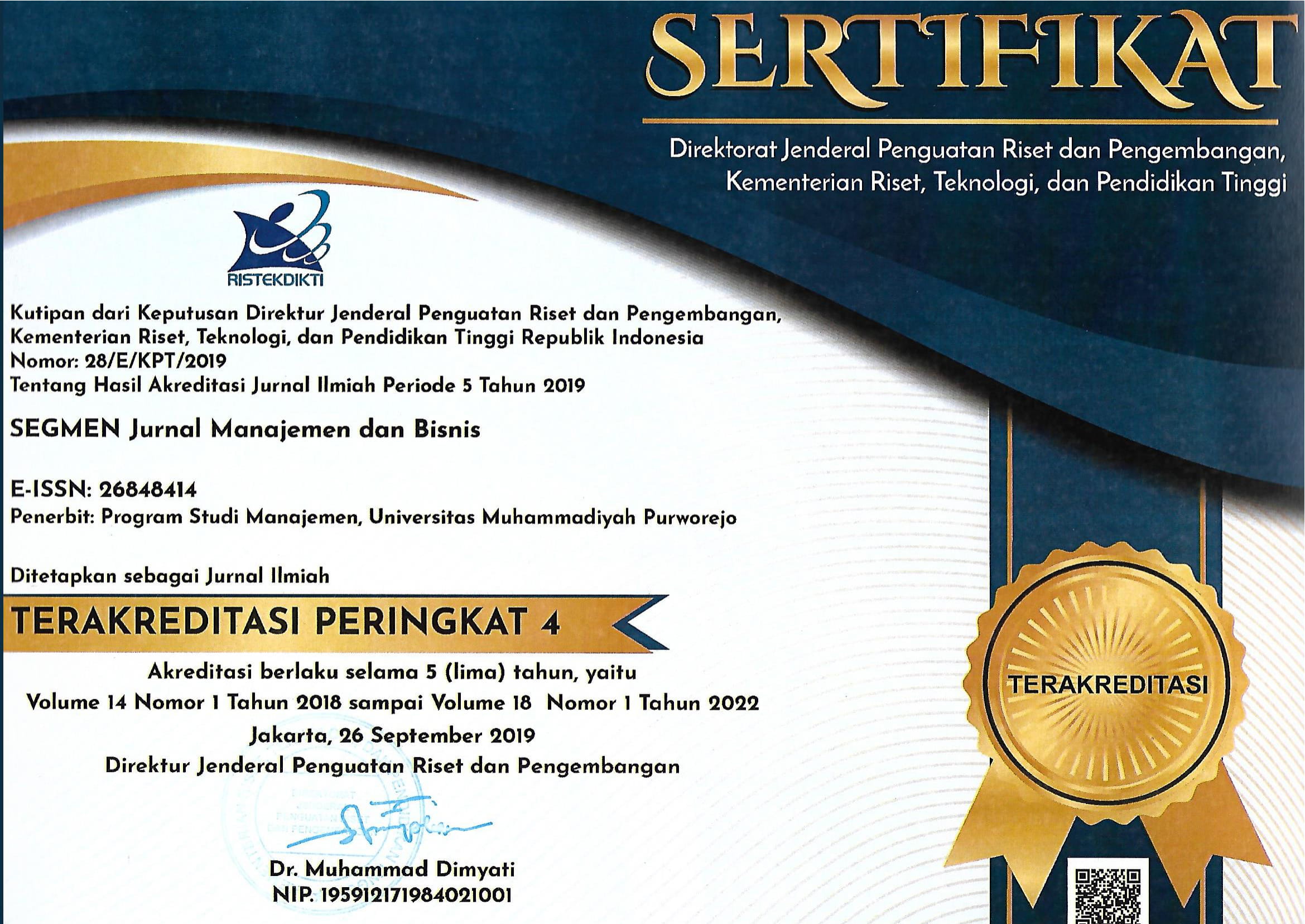IMPLEMENTATION OF GOVERNANCE IN SMEs: COMPARISON OF IMPLEMENTATION IN FAMILY AND NON-FAMILY BUSINESS (CASE STUDY IN SMEs IN YOGYAKARTA)
Abstract
The purpose of this study is to identify the application of aspects of corporate governance in family businesses and SMEs scale non-family businesses in the Special Region of Yogyakarta and to identify differences in the application of aspects of corporate governance in family businesses and non-family businesses on the scale of SMEs in the Special Region. Yogyakarta. Respondents in this study involved SMEs in the Special Region of Yogyakarta. Five family businesses and five SME scale non-family businesses in the Yogyakarta Special Region were selected in each sampling location. The sample was determined by the convenience sampling method. This study will first examine the application of governance in family businesses and non-family businesses separately, then compare the application of governance between the two types of business.
This study indicates that each type of business has carried out corporate governance in its business, but not maximally. There are advantages and disadvantages in its application. Most of the reasons for these differences in implementation arise from the basic characteristics that differentiate family businesses and non-family businesses, namely the ownership structure and the business structure. The more concentrated ownership and business structure, the less transparency, accountability, responsibility, independence, and fairness the company tends to be. On the other hand, in companies with more dispersed levels of ownership concentration and business structure, the application of the five aspects of corporate governance will increase.
Keywords: Good Corporate Governance, Small and Medium Enterprises, Family and Non-Family Business
Full Text:
PDFDOI: https://doi.org/10.37729/sjmb.v17i2.7169
Refbacks
- There are currently no refbacks.

Ciptaan disebarluaskan di bawah Lisensi Creative Commons Atribusi-BerbagiSerupa 4.0 Internasional.









